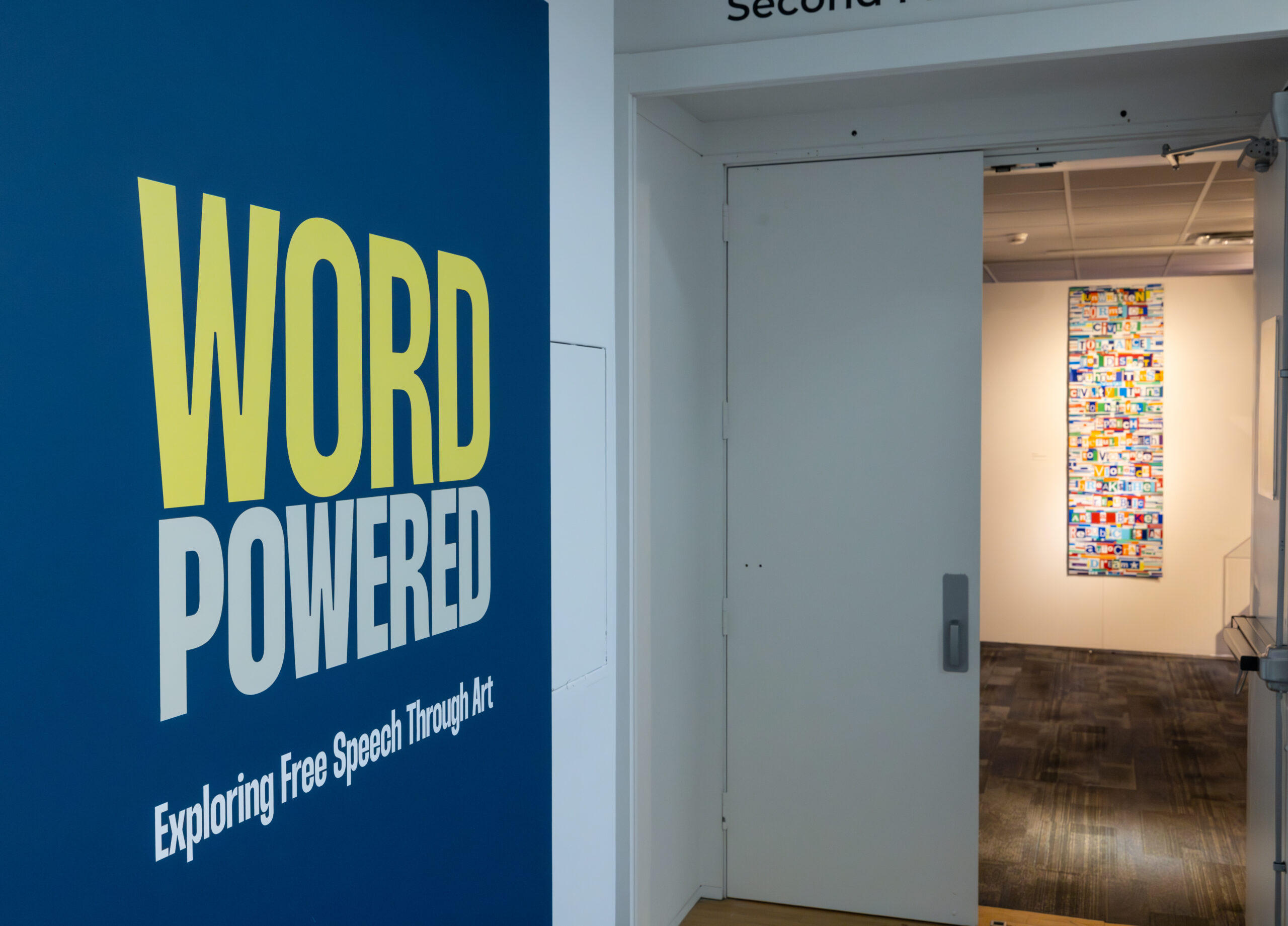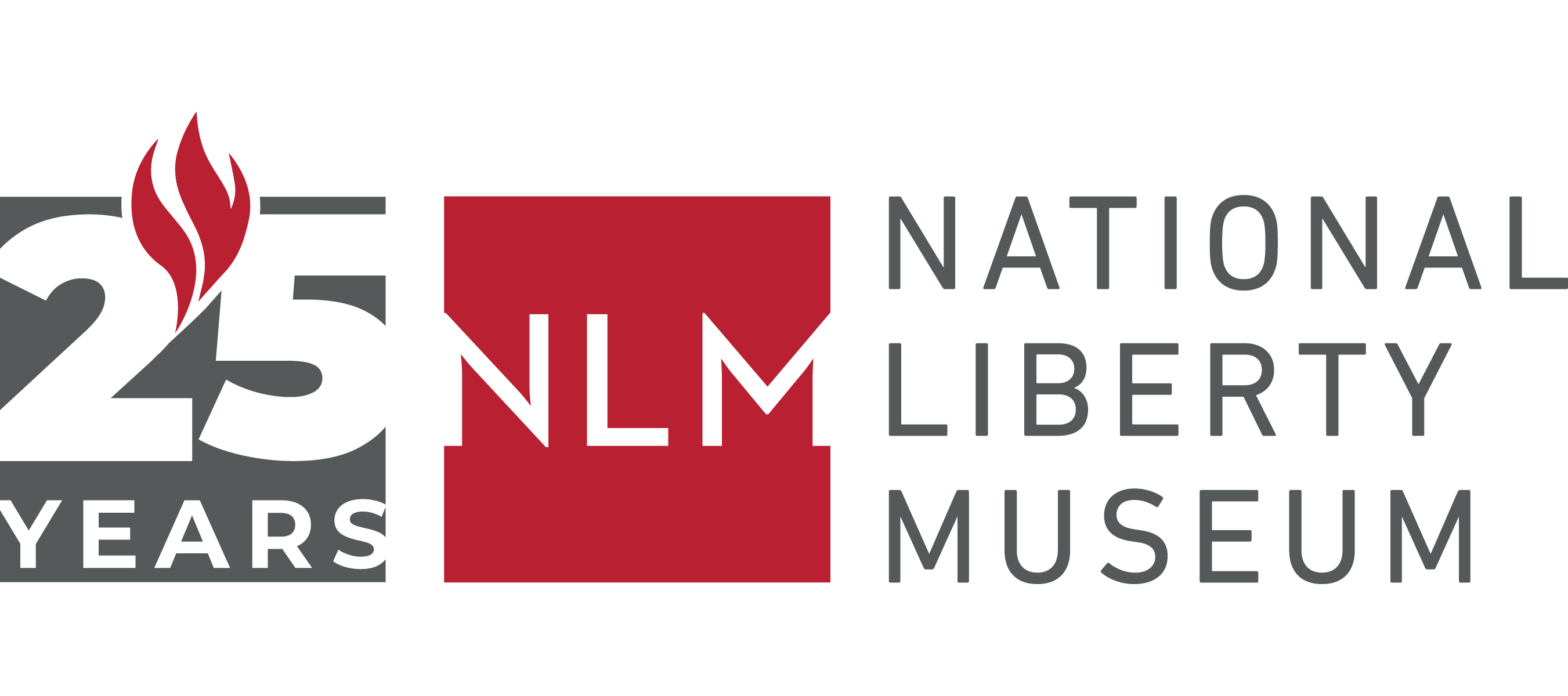Art, Beauty, and Censorship: An Exploration of Expression
At the National Liberty Museum, we are proud of our latest special exhibition, Word Powered: Exploring Free Speech Through Art. This exhibition invites us to reflect on the power of language—how it can be celebrated, manipulated, or silenced—while bringing together diverse voices and mediums to explore the delicate balance between censorship and free expression. With this topic on our minds during the exhibition, we decided to explore it here on our blog to illuminate the intent behind our work. As we take this journey, we invite you to engage with profound questions regarding the role of art in communicating ideas and emotions, the nature of beauty, and the implications of censorship.
 The Power of Art
The Power of Art
Art may be the most powerful way to pose a question we can ask ourselves. By giving us a painting, novel, film, sculpture, or performance, we—as audience members—are invited to think critically. It is upon us to interpret the art, to give it meaning within ourselves, and to ask and answer our own questions. What is the perspective? What is the method? Is this piece successful in its goals? What are those goals? How are they achieved—or not? This is our power as viewers, and it is this power that makes great art so affecting. But with that power comes responsibility: a responsibility to be honest, to be thoughtful, and perhaps to defend the sanctity of artistic freedom—the great communicator of culture and values.
The Historical Dance of Art and Censorship
The relationship between art and censorship has always been fraught. Governments, religious institutions, and cultural movements have sought to define and regulate artistic expression, sometimes in an attempt to uphold moral or aesthetic ideals, and other times to suppress dissenting voices.
In January 2025, President Donald Trump issued an executive order titled Promoting Beautiful Federal Architecture, which emphasized the importance of classical architecture in government buildings. The order mandated that ‘Federal public buildings should be visually identifiable as civic buildings and respect regional, traditional, and classical architectural heritage in order to uplift and beautify public spaces and ennoble the United States and our system of self-government.’ While some celebrate this move as a defense of time-honored artistic values, others see it as a form of artistic censorship, limiting the creative freedom of architects and imposing a singular definition of beauty. The debate surrounding this order echoes broader discussions about the role of government in shaping artistic expression and whether artistic beauty can or should be legislated.
To further explore these themes, let’s examine a few historical and contemporary examples of art that have sparked controversy, challenged norms, and redefined our understanding of beauty and censorship.
Gustave Courbet: The Realism Movement
In the late 19th century, Gustave Courbet became a pivotal figure in the Realism movement, challenging artistic conventions by depicting everyday life with unidealized honesty. His painting The Origin of the World, featuring a close-up of female genitalia, incited outrage and was banned from public display for years. This radical approach questioned accepted standards of beauty and morality, positioning Courbet at the center of a fierce debate within the art community regarding the role of realism versus idealism.
Marcel Duchamp: The Fountain of Controversy
Duchamp’s 1917 submission of the urinal Fountain to an art exhibition broke the traditional notion of what constituted art. This piece, signed R. Mutt, challenged not just artistic norms but the very institution of art itself. Some critics labeled Duchamp’s work as absurd and degenerate. Yet, Fountain ultimately paved the way for conceptual art, emphasizing the artist’s role as a provocateur and the importance of ideas over tangible forms.
Norman Rockwell: The Power of Narrative Art
While some artists rebel against traditional aesthetics, others, like Norman Rockwell, embraced them to tell profound cultural stories. Rockwell’s works, often considered quintessentially American, were sometimes criticized for their idealized representations of society. However, his later paintings, such as The Problem We All Live With, which depicted Ruby Bridges integrating an all-white school, demonstrated how traditional techniques could be wielded to make powerful political statements. Rockwell’s ability to blend beauty with social commentary illustrates how aesthetics can be a vehicle for both preservation and progress.
Tataloo: The Controversial Iranian Artist
In contemporary Iranian culture, Tataloo has become a symbol of rebellion against censorship. His music and public persona challenge authoritarian norms in Iranian society, resulting in his imprisonment and suppression of his art. Tataloo’s struggle highlights the clash between artistic freedom and government censorship in societies where art can be viewed as a form of dissent. Recently, the musician was sentenced to death for blasphemy due to his music and public persona. It’s important to consider how this dialogue differs in countries where freedom of expression is not guaranteed.
Art as a Catalyst for Dialogue
The debates surrounding art, beauty, and censorship are ongoing. President Trump’s executive order, DuChamp’s Fountain, and Norman Rockwell’s traditional approach raise critical questions: should artistic beauty be defined and preserved by government mandate, or free speech and expression win out? Likewise, should artists bear any responsibility toward societal values, or should they be completely unfettered in their pursuit of self-expression?
Through the lens of our exhibition Word Powered, we invite you to reflect upon the following:
- Do you find artistic value in any of the pieces we’ve discussed? If so, which ones?
- Should the government have a role in defining artistic beauty?
- Should artists be beholden to authorities about what they can and cannot distribute?
- Does good art need to be beautiful?
- Can something be truly beautiful if it’s censored?
- Does artistic freedom come at a cost?
Find Thoughtful Discourse on Free Speech at NLM
Word Powered: Exploring Free Speech Through Art encourages us to rethink the connections and contradictions between art, beauty, and censorship. As you explore this exhibition of contemporary art, we invite you to consider the responsibilities that come with artistic expression and the importance of upholding free speech. Join us in this critical dialogue—can we create a world where all voices are heard and celebrated, where beauty exists alongside raw truth? As you reflect on these questions, remember that art remains a powerful tool for shaping our understanding of freedom, expression, and the human experience. Purchase your tickets here.
